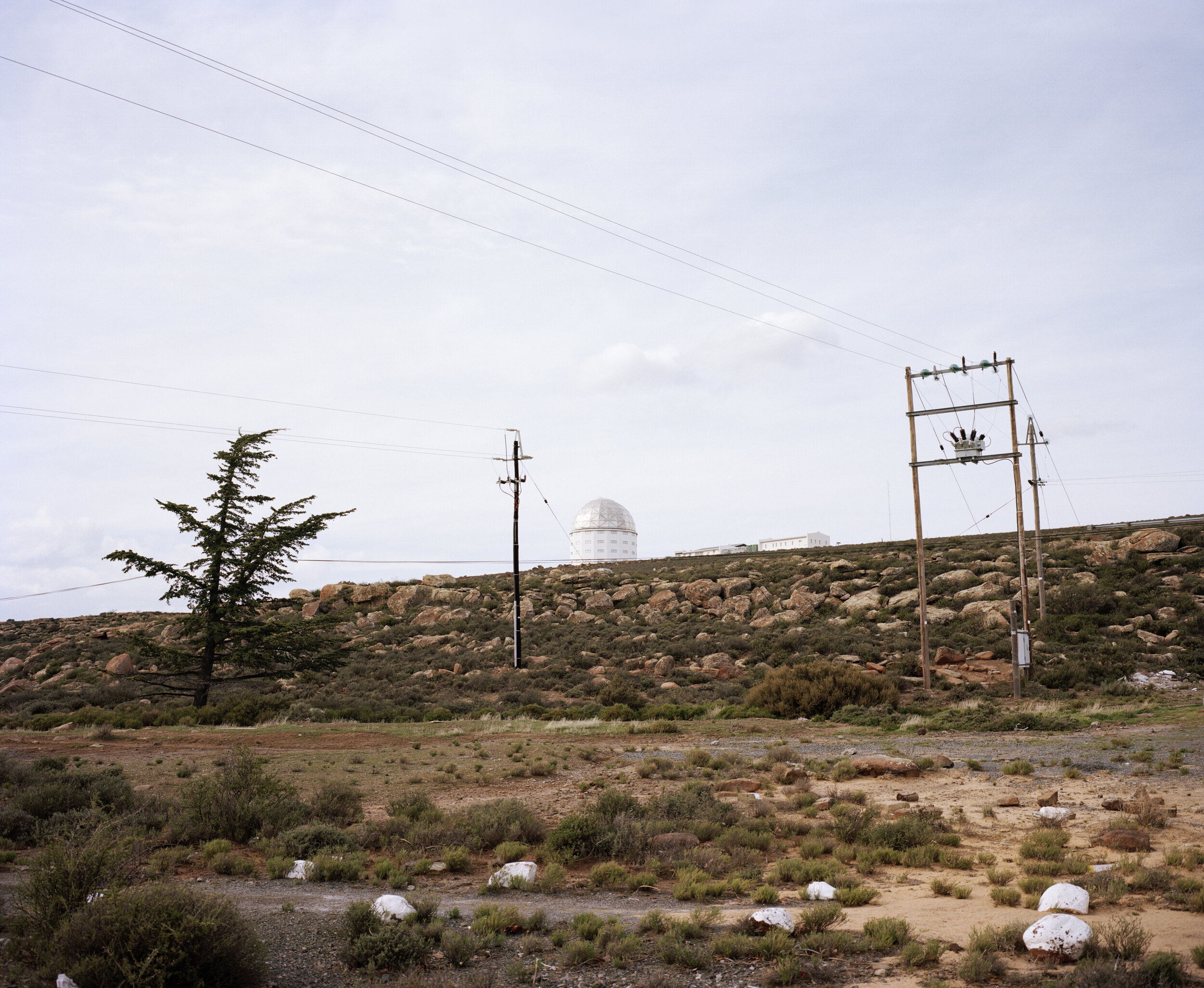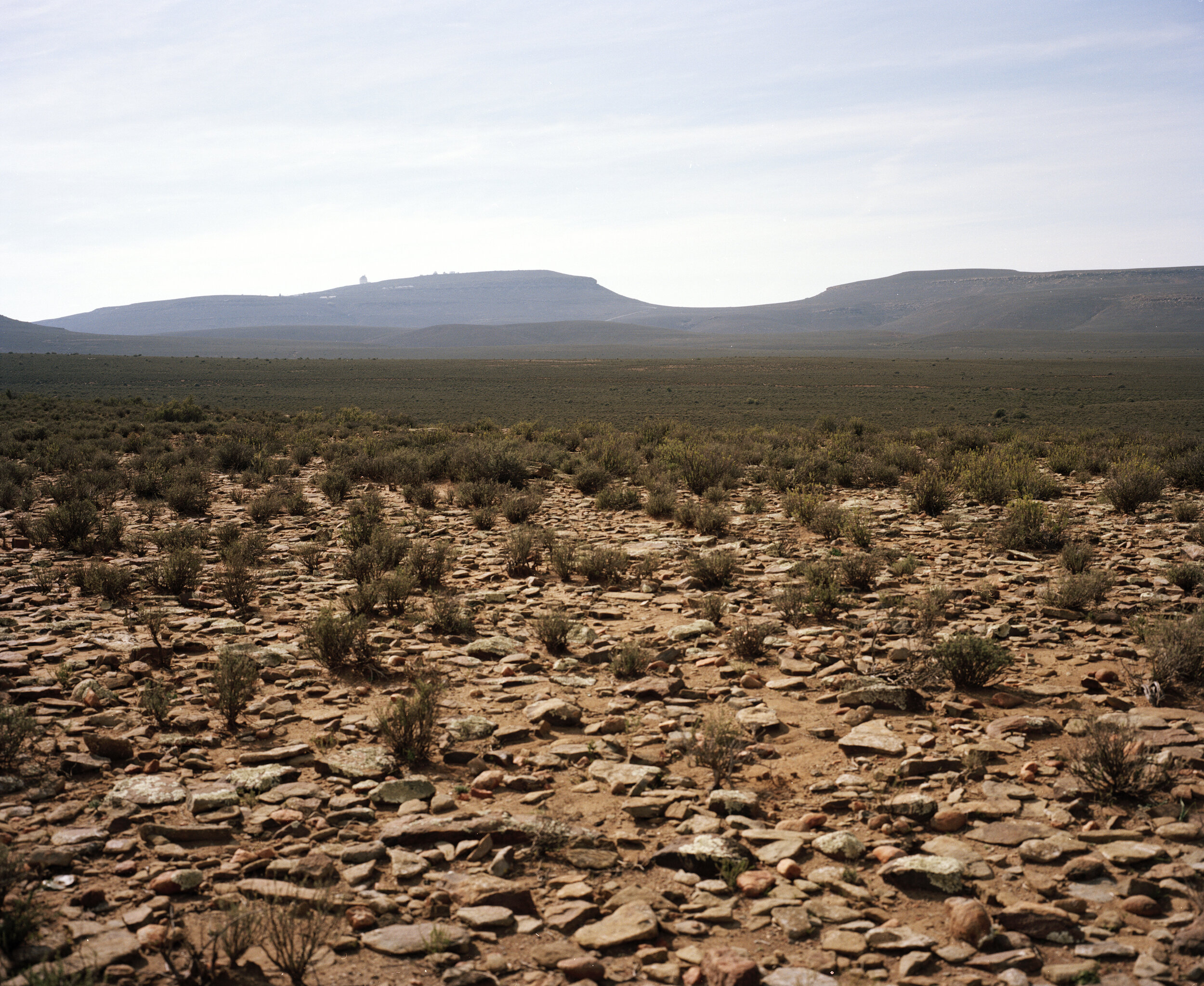In 2011 the deepest land living creature was discovered inside a South African gold mine. A new species of nematode worm Halicephalobus mephisto was found 3.5km below the surface. They thrive in conditions thought to be too harsh for any creature - where previously it was thought that only single-celled bacteria survive.
The discovery has also encouraged the search for life on other planets with the possibility of more creatures surviving underground.
In 2011 the deepest land living creature was discovered inside a South African gold mine. A new species of nematode worm Halicephalobus mephisto was found 3.5km below the surface. They thrive in conditions thought to be too harsh for any creature - where previously it was thought that only single-celled bacteria survive.
The discovery has also encouraged the search for life on other planets with the possibility of more creatures surviving underground.
THE OLD MINE #3, GOLD REEF CITY, JOHANNESBURG, GAUTENG
In 2011 the deepest land living creature was discovered inside a South African gold mine. A new species of nematode worm Halicephalobus mephisto was found 3.5km below the surface. They thrive in conditions thought to be too harsh for any creature - where previously it was thought that only single-celled bacteria survive.
The discovery has also encouraged the search for life on other planets with the possibility of more creatures surviving underground.
In 2011 the deepest land living creature was discovered inside a South African gold mine. A new species of nematode worm Halicephalobus mephisto was found 3.5km below the surface. They thrive in conditions thought to be too harsh for any creature - where previously it was thought that only single-celled bacteria survive.
The discovery has also encouraged the search for life on other planets with the possibility of more creatures surviving underground.
THE OLD MINE #2, GOLD REEF CITY, JOHANNESBURG, GAUTENG
In 2011 the deepest land living creature was discovered inside a South African gold mine. A new species of nematode worm Halicephalobus mephisto was found 3.5km below the surface. They thrive in conditions thought to be too harsh for any creature - where previously it was thought that only single-celled bacteria survive.
The discovery has also encouraged the search for life on other planets with the possibility of more creatures surviving underground.
In 2011 the deepest land-living creature was discovered inside a South African gold mine. A new species of nematode worm Halicephalobus Mephisto was found 3.5km below the surface. They thrive in conditions thought to be too harsh for any creature - where previously it was thought that only single-celled bacteria survive.
The discovery has also encouraged the search for life on other planets with the possibility of more creatures surviving underground.
THE OLD MINE #4, GOLD REEF CITY, JOHANNESBURG, GAUTENG
In 2011 the deepest land living creature was discovered inside a South African gold mine. A new species of nematode worm Halicephalobus mephisto was found 3.5km below the surface. They thrive in conditions thought to be too harsh for any creature - where previously it was thought that only single-celled bacteria survive.
The discovery has also encouraged the search for life on other planets with the possibility of more creatures surviving underground.
In 2011 the deepest land living creature was discovered inside a South African gold mine. A new species of nematode worm Halicephalobus mephisto was found 3.5km below the surface. They thrive in conditions thought to be too harsh for any creature - where previously it was thought that only single-celled bacteria survive.
The discovery has also encouraged the search for life on other planets with the possibility of more creatures surviving underground.
THE OLD MINE #5, GOLD REEF CITY, JOHANNESBURG, GAUTENG
In 2011 the deepest land living creature was discovered inside a South African gold mine. A new species of nematode worm Halicephalobus mephisto was found 3.5km below the surface. They thrive in conditions thought to be too harsh for any creature - where previously it was thought that only single-celled bacteria survive.
The discovery has also encouraged the search for life on other planets with the possibility of more creatures surviving underground.
In 2011 the deepest land living creature was discovered inside a South African gold mine. A new species of nematode worm Halicephalobus mephisto was found 3.5km below the surface. They thrive in conditions thought to be too harsh for any creature - where previously it was thought that only single-celled bacteria survive.
The discovery has also encouraged the search for life on other planets with the possibility of more creatures surviving underground.
THE OLD MINE #1, GOLD REEF CITY, JOHANNESBURG, GAUTENG
In 2011 the deepest land living creature was discovered inside a South African gold mine. A new species of nematode worm Halicephalobus mephisto was found 3.5km below the surface. They thrive in conditions thought to be too harsh for any creature - where previously it was thought that only single-celled bacteria survive.
The discovery has also encouraged the search for life on other planets with the possibility of more creatures surviving underground.
OLD ROAD, R354 BETWEEN MATJIESFONTEIN AND SUTHERLAND
Some of the evidence remaining of the old main route to Sutherland - these lines of rocks can be seen from the R354 currently in use. The inside of the old road seems to have fully restored over time, looking exactly the same as the fynbos surrounding it. We were wondering if the same fate awaits the R354.
Read MoreSAAO OBSERVATORY # 9, SUTHERLAND, NORTHERN CAPE
SAAO OBSERVATORY # 8, SUTHERLAND, NORTHERN CAPE
SAAO OBSERVATORY # 6, SUTHERLAND, NORTHERN CAPE
SAAO OBSERVATORY # 7, SUTHERLAND, NORTHERN CAPE
SAAO OBSERVATORY # 3, SUTHERLAND, NORTHERN CAPE
SUTHERLAND # 2, (THE ROAD TO THE SAAO OBSERVATORY), NORTHERN CAPE
SUTHERLAND, (THE ROAD TO THE SAAO OBSERVATORY), NORTHERN CAPE
OFENTSE LETEBELE, IZIKO PLANETARIUM PRESENTER, CAPE TOWN
Ofentse Letebele is part of the team working to translate some of the old Planetarium shows to the new Digital Dome system.
Read MoreSAAO #1, OBSERVATORY, CAPE TOWN
View of the McClean telescope dome, South African Astronomical Observatory. The Observatory garden contains many beautiful flowers and plants including rare species, having become somewhat of a sanctuary in the area. Flowers in the foreground are Leucospermum cordifolium - Pincushion, Bobbejaanklou, Luisiesboom, Luisiesbos.
Read MoreSAAO # 1, SUTHERLAND, NORTHERN CAPE
'With the 1.9m we were looking at the spectra itself. Like looking at a prism, we used diffraction gratings where you could shift the light and look at different parts of the colour spectrum - from there you can tell from what stars were made of and so forth. Just doing star gazing, especially if you look at Jupiter and Saturn, it blows your mind away. If you look at Jupiter it looks like a solar system on its own. The big mother planet with a few small moons around it, and from time to time you see one of the moons disappear. Then you look at Saturn with the nice rings around it, it looks like a sombrero - that is just unbelievable.'
Francois van Wyk, Night Assistant and service observer, South African Astronomical Observatory, Sutherland.
Read MoreSAAO # 4, SUTHERLAND, NORTHERN CAPE, 2016
'With the 1.9m we were looking at the spectra itself. Like looking at a prism, we used diffraction gratings where you could shift the light and look at different parts of the color spectrum - from there you can tell from what stars were made of and so forth. Just doing star gazing, especially if you look at Jupiter and Saturn, it blows your mind away. If you look at Jupiter it looks like a solar system on its own. The big mother planet with a few small moons around it, and from time to time you see one of the moons disappear. Then you look at Saturn with the nice rings around it, it looks like a sombrero - that is just unbelievable. My first three years I was working with other people, as I was undergoing training. From there on most of the time I was on my own. Sometimes for 14 hours in winter, just with a CD player, my night lunch and my coffee. Then it is up to you to make all the decisions. You just got to make sure you stay awake and alert. Otherwise you can screw up big time. I did fall asleep, but the thing is, if you feel you are tired it is best to close the dome, switch everything off and sit and sleep. If you leave things on and you fall asleep then you are in trouble.’
Francois van Wyk, Night Assistant and service observer, South African Astronomical Observatory, Sutherland.
Read MoreSAAO # 2, SUTHERLAND, NORTHERN CAPE
'My first three years, I was working with other people as I was undergoing training. From there on, most of the time I was on my own. Sometimes for 14 hours in winter, just with a CD player, my night lunch and my coffee. Then it is up to you to make all the decisions. You have just got to make sure you stay awake and alert. Otherwise you can screw up big time. I did fall asleep, but the thing is, if you feel you are tired it is best to close the dome, switch everything off and sit and sleep. If you leave things on and you fall asleep then you are in trouble.’
Francois van Wyk, Night Assistant and service observer, South African Astronomical Observatory, Sutherland.
Read MoreSALT, SAAO, SUTHERLAND, NORTHERN CAPE
'My first three years, I was working with other people as I was undergoing training. From there on, most of the time I was on my own. Sometimes for 14 hours in winter, just with a CD player, my night lunch and my coffee. Then it is up to you to make all the decisions. You have just got to make sure you stay awake and alert. Otherwise you can screw up big time. I did fall asleep, but the thing is, if you feel you are tired it is best to close the dome, switch everything off and sit and sleep. If you leave things on and you fall asleep then you are in trouble.’
Francois van Wyk, Night Assistant and service observer, South African Astronomical Observatory, Sutherland.
SALT (Southern African Large Telescope) at the South African Astronomical Observatory, just outside Sutherland in the Northern Cape. It is one of the largest optical telescopes in the world - so powerful and sensitive that it could spot a candle flame on the moon.


















